巴斯夫在美国投资新兴的纳米银墨产业
- 格式:pdf
- 大小:97.77 KB
- 文档页数:1
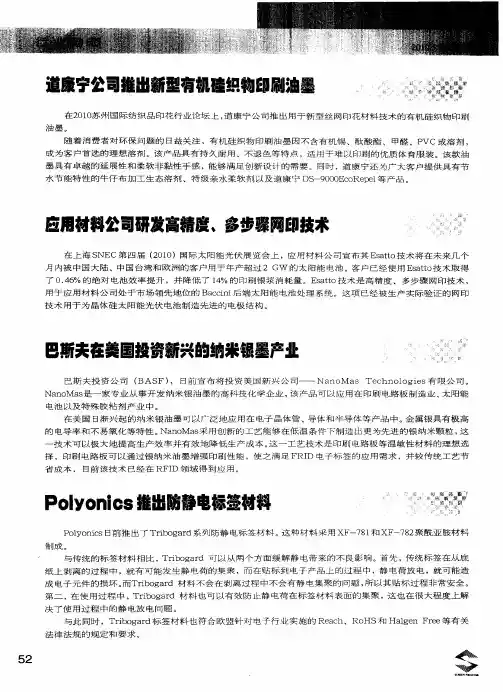
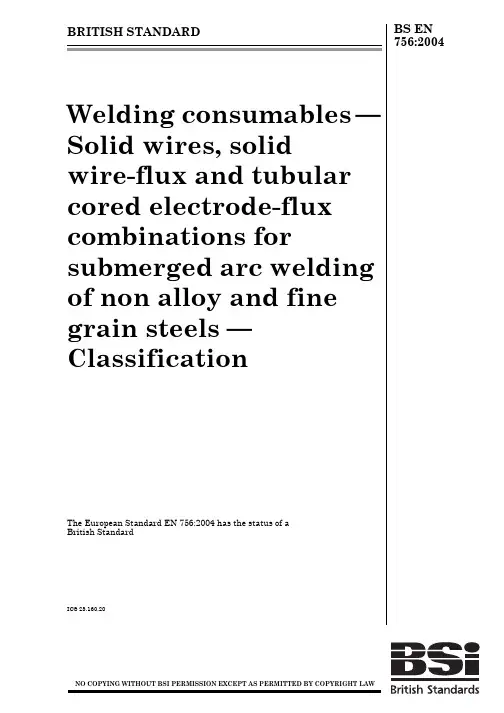
BRITISH STANDARD BS EN756:2004Welding consumables—Solid wires, solidwire-flux and tubular cored electrode-flux combinations for submerged arc weldingof non alloy and finegrain steels— ClassificationThe European Standard EN 756:2004 has the status of aBritish StandardICS 25.160.2012 &23<,1* :,7+287 %6, 3(50,66,21 (;&(37 $6 3(50,77(' %< &23<5,*+7 /$:BS EN 756:2004This British Standard was published under the authority of the Standards Policy and Strategy Committee on 10March 2004© BSI 10March 2004ISBN 0 580 43546 6National forewordThis British Standard is the official English language version of EN 756:2004. It supersedes BS EN 756:1996 which is withdrawn.The UK participation in its preparation was entrusted to Technical Committee WEE/39, Welding consumables, which has the responsibility to: A list of organizations represented on this committee can be obtained on request to its secretary.Cross-referencesThe British Standards which implement international or Europeanpublications referred to in this document may be found in the BSI Catalogue under the section entitled “International Standards Correspondence Index”, or by using the “Search” facility of the BSI Electronic Catalogue or of British Standards Online.This publication does not purport to include all the necessary provisions of a contract. Users are responsible for its correct application.Compliance with a British Standard does not of itself confer immunity from legal obligations.—aid enquirers to understand the text;—present to the responsible international/European committee any enquiries on the interpretation, or proposals for change, and keep the —Summary of pagesThis document comprises a front cover, an inside front cover, the EN title page, pages 2 to 12, an inside back cover and a back cover.The BSI copyright notice displayed in this document indicates when the document was last issued.Amendments issued since publication Amd. No.Date CommentsEUROPEAN STANDARD NORME EUROPÉENNE EUROPÄISCHE NORMEN 756March 2004ICS 25.160.20Supersedes EN 756:1995English versionWelding consumables - Solid wires, solid wire-flux and tubular cored electrode-flux combinations for submerged arc welding ofnon alloy and fine grain steels - ClassificationProduits consommables pour le soudage - Fils pleins,couples fils pleins-flux et fils fourrés-flux pour le soudage àl'arc sous flux des aciers non alliés et à grains fins -ClassificationSchweißzusätze - Massivdrähte, Fülldrähte undDrahtpulver-Kombinationen zum Unterpulverschweißen von unlegierten Stählen und Feinkornbaustählen - EinteilungThis European Standard was approved by CEN on 2 January 2004.CEN members are bound to comply with the CEN/CENELEC Internal Regulations which stipulate the conditions for giving this European Standard the status of a national standard without any alteration. Up-to-date lists and bibliographical references concerning such national standards may be obtained on application to the Central Secretariat or to any CEN member.This European Standard exists in three official versions (English, French, German). A version in any other language made by translation under the responsibility of a CEN member into its own language and notified to the Central Secretariat has the same status as the official versions.CEN members are the national standards bodies of Austria, Belgium, Cyprus, Czech Republic, Denmark, Estonia, Finland, France,Germany, Greece, Hungary, Iceland, Ireland, Italy, Latvia, Lithuania, Luxembourg, Malta, Netherlands, Norway, Poland, Portugal, Slovakia,Slovenia, Spain, Sweden, Switzerland and United Kingdom.EUROPEAN COMMITTEE FOR STANDARDIZATION C O M I T É E U R O P ÉE N D E N O R M A LI S A T I O N C HES KOM ITEE FÜR NOR M UNG© 2004 CENAll rights of exploitation in any form and by any means reserved worldwide for CEN national Members.Ref. No. EN 756:2004: EEN 756:2004 (E)ContentsPage Foreword (3)Introduction (4)1Scope (5)2Normative references (5)3Classification (5)4Symbols and requirements (6)4.1Symbol for the process (6)4.2Symbol for the tensile properties (6)4.2.1Multi run technique (6)4.2.2Two-run technique (6)4.3Symbol for the impact properties of all-weld metal or two-run weldment (6)4.4Symbol for the type of welding flux (7)4.5Symbol for the chemical composition of solid wire electrodes or the all-weld metaldeposited by a tubular cored electrode-flux combinations (7)5Mechanical tests (9)5.1Multi run technique (9)5.2Two run technique (10)6Chemical analysis (10)7Technical delivery conditions (10)8Designation (10)Bibliography (12)2EN 756:2004 (E)ForewordThis document (EN 756:2004) has been prepared by Technical Committee CEN/TC 121 “Welding”, the secretariat of which is held by DIN.This European Standard shall be given the status of a national standard, either by publication of an identical text or by endorsement, at the latest by September 2004, and conflicting national standards shall be withdrawn at the latest by September 2004.This document supersedes EN 756:1995.According to the CEN/CENELEC Internal Regulations, the national standards organizations of the following countries are bound to implement this European Standard: Austria, Belgium, Cyprus, Czech Republic, Denmark, Estonia, Finland, France, Germany, Greece, Hungary, Iceland, Ireland, Italy, Latvia, Lithuania, Luxembourg, Malta, Netherlands, Norway, Poland, Portugal, Slovakia, Slovenia, Spain, Sweden, Switzerland and United Kingdom.3EN 756:2004 (E)IntroductionThis standard proposes a classification in order to designate solid wire electrodes by chemical analyses and solid wire-flux combinations in terms of the yield strength, tensile strength and elongation and impact properties of the all-weld metal. Tubular cored electrode-flux combinations are designated by the chemical composition; yield strength, tensile strength and elongation and impact properties of the all-weld metal. The ratio of yield to tensile strength of weld metal is generally higher than that of parent metal. Users should note that matching weld metal yield strength to parent metal yield strength will not necessarily ensure that the weld metal tensile strength matches that of the parent material. Where the application requires matching tensile strength, therefore, selection of the consumable should be made by reference to column 3 of Table 1.Although combinations of electrodes and fluxes supplied by individual companies may have the same grading, the individual electrodes and fluxes from different companies are not interchangeable unless verified according to this standard.It should be noted that the mechanical properties of all-weld metal test specimens used to classify the electrode-flux combinations will vary from those obtained in production joints because of differences in welding procedures such as electrode size and parent metal chemical composition.4EN 756:2004 (E)1 ScopeThis standard specifies requirements for classification of electrode-flux combinations and all-weld metal in the as-welded condition for submerged arc welding of non alloy and fine grain steels with a minimum yield strength of up to 500 MPa. Classification can be made with solid wire electrodes or tubular cored electrodes. One flux may be classified with different electrodes. The solid wire electrode is also classified separately based on its chemical composition. Fluxes for the single and two run techniques are classified on the basis of the two run technique.2 Normative referencesThis European Standard incorporates by dated or undated reference, provisions from other publications. These normative references are cited at the appropriate places in the text and the publications are listed hereafter. For dated references, subsequent amendments to or revisions of any of these publications apply to European Standards only when incorporated in it by amendment or revision. For undated references the latest edition of the publication referred to applies (including amendments).EN ISO 544, Welding consumables – Technical delivery conditions for welding filler materials – Type of product, dimensions, tolerances and markings (ISO 544:2003).EN 760, Welding consumables – Fluxes for submerged arc welding – Classification.EN 1597-1, Welding consumables - Test methods - Part 1: Test piece for all-weld metal test specimens in steel, nickel and nickel alloys.EN 1597-2, Welding consumables - Test methods - Part 2: Preparation of test piece for single-run and two-run technique test specimens in steel.EN ISO 6847, Welding consumables - Deposition of a weld metal pad for chemical analysis (ISO 6847:2000). EN ISO 13916, Welding – Guidance on the measurement of preheating temperature, interpass temperature and preheat maintenance temperature (ISO 13916:1996).ISO 31-0:1992, Quantities and units – Part 0: General principles.3 ClassificationThe classification includes all-weld metal properties obtained with a manufacturer's specific electrode-flux combination as given below. A solid wire electrode may be separately classified with the symbol for its chemical composition in Table 5.The classification is divided into five parts:1) The first part gives a symbol indicating the process to be identified.2) The second part gives a symbol indicating strength and elongation of all-weld metal for multi runtechnique or the strength of the parent material used in classification for the two run technique.3) The third part gives a symbol indicating impact properties of the all-weld metal or the two run weldedjoint.4) The fourth part gives a symbol indicating the type of flux used.5) The fifth part gives a symbol indicating the chemical composition of the solid wire electrode used or thechemical composition of the all-weld metal deposited by a tubular cored electrode-flux combination.5EN 756:2004 (E)64 Symbols and requirements4.1 Symbol for the processThe symbol for a solid wire electrode and/or an electrode-flux combination used in the submerged arc welding process shall be the letter S.4.2 Symbol for the tensile properties4.2.1 Multi run techniqueThe symbol in Table 1 indicates yield strength, tensile strength and elongation of the all-weld metal in the as-welded condition determined in accordance with 5.1.Table 1 — Symbol for tensile properties by multi run technique SymbolMinimumyield strengthaMPa Tensile strength MPa Minimum elongationb%35355440 to 5702238380470 to 6002042420500 to 6402046460530 to 6802050500560 to 72018a For yield strength the lower yield (R eL ) shall be used when yielding occurs, otherwise the 0,2 % proof strength (R pO,2) shall be used.bGauge length is equal to five times the specimen diameter.4.2.2 Two-run techniqueThe symbol indicates strength of the welded joint in relation to strength of the parent material used in two-run welding tests satisfactorily completed in accordance with 5.2.Table 2 — Symbol for the tensile properties by two-run technique SymbolMinimum parent material yield strength MPa Minimum tensile strength of the welded jointMPa 2T 2753703T 3554704T 4205205T5006004.3 Symbol for the impact properties of all-weld metal or two-run weldmentThe symbol in Table 3 indicates the temperature at which an average impact energy of 47 J is achieved under conditions given in clause 5. Three specimens shall be tested. Only one individual value may be lower than 47 J but not lower than 32 J. When an electrode-flux combination has been classified for a certain temperature, it automatically covers any higher temperature in Table 3.EN 756:2004 (E)Table 3 — Symbol for the impact properties of all-weld metal or two-run welded joint Symbol Temperature for minimum average impact energy of 47 J°CZ no requirementsA+20002-203-304-405-506-607-708-804.4 Symbol for the type of welding fluxThe symbol in Table 4 indicates the welding flux as described in EN 760.Table 4 — Symbol for the type of welding fluxType of flux SymbolManganese-silicate MSCalcium-silicate CSZirconium-silicate ZSRutile-silicate RSAluminate-rutile ARAluminate-basic ABAluminate-silicate ASAluminate-fluoride-basic AFFluoride-basic FBAny other type Z4.5 Symbol for the chemical composition of solid wire electrodes or the all-weld metal deposited by a tubular cored electrode-flux combinationsThe symbol in Table 5 indicates the chemical composition of the solid wire electrode and includes an indication of characteristic alloying elements.The symbol in Table 6 indicates the chemical composition of the all-weld metal deposited by a tubular cored electrode-flux combination carried out according to Table 7.The chemical composition of the weld metal is dependent on the chemical composition of the solid wire electrode or tubular cored electrode and the metallurgical behaviour of the flux (see EN 760).7E N 756:2004 (E )8T a b l e 5 — C h e m i c a l c o m p o s i t i o n o f s o l i d w i r e e l e c t r o d e s f o r s u b m e r g e d a r c w e l d i n gC h e m i c a l c o m p o s i t i o n (%) (m /m )ab cS y m b o lC S i M nPS M o N i C rC uS Z a n y o t h e r a g r e e d c o m p o s i t i o n S 10,05 t o 0,150,150,35 t o 0,600,0250,0250,150,150,150,30S 20,07 t o 0,150,150,80 t o 1,300,0250,0250,150,150,150,30S 30,07 t o 0,150,151,30 t o 1,750,0250,0250,150,150,150,30S 40,07 t o 0,150,151,75 t o 2,250,0250,0250,150,150,150,30S 1S i 0,07 t o 0,150,15 t o 0,400,35 t o 0,600,0250,0250,150,150,150,30S 2S i 0,07 t o 0,150,15 t o 0,400,80 t o 1,300,0250,0250,150,150,150,30S 2S i 20,07 t o 0,150,40 t o 0,600,80 t o 1,300,0250,0250,150,150,150,30S 3S i 0,07 t o 0,150,15 t o 0,401,30 t o 1,850,0250,0250,150,150,150,30S 4S i 0,07 t o 0,150,15 t o 0,401,85 t o 2,250,0250,0250,150,150,150,30S 1M o 0,05 t o 0,150,05 t o 0,250,35 t o 0,600,0250,0250,45 t o 0,650,150,150,30S 2M o 0,07 t o 0,150,05 t o 0,250,80 t o 1,300,0250,0250,45 t o 0,650,150,150,30S 3M o 0,07 t o 0,150,05 t o 0,251,30 t o 1,750,0250,0250,45 t o 0,650,150,150,30S 4M o 0,07 t o 0,150,05 t o 0,251,75 t o 2,250,0250,0250,45 t o 0,650,150,150,30S 2N i 10,07 t o 0,150,05 t o 0,250,80 t o 1,300,0200,0200,150,80 t o 1,200,150,30S 2N i 1,50,07 t o 0,150,05 t o 0,250,80 t o 1,300,0200,0200,151,20 t o 1,800,150,30S 2N i 20,07 t o 0,150,05 t o 0,250,80 t o 1,300,0200,0200,151,80 t o 2,400,150,30S 2N i 30,07 t o 0,150,05 t o 0,250,80 t o 1,300,0200,0200,152,80 t o 3,700,150,30S 2N i 1M o 0,07 t o 0,150,05 t o 0,250,80 t o 1,300,0200,0200,45 t o 0,650,80 t o 1,200,200,30S 3N i 1,50,07 t o 0,150,05 t o 0,251,30 t o 1,700,0200,0200,151,20 t o 1,800,200,30S 3N i 1M o 0,07 t o 0,150,05 t o 0,251,30 t o 1,800,0200,0200,45 t o 0,650,80 t o 1,200,200,30S 3N i 1,5M o 0,07 t o 0,150,05 t o 0,251,20 t o 1,800,0200,0200,30 t o 0,501,20 t o 1,800,200,30S 2N i 1C u 0,08 t o 0,120,15 t o 0,350,70 t o 1,200,0200,0200,150,65 t o 0,900,400,40 t o 0,65S 3N i 1C u 0,05 t o 0,150,15 t o 0,401,20 t o 1,700,0250,0250,150,60 t o 1,200,150,30 t o 0,60a F i n i s h e d p r o d u c t c h e m i c a l c o m p o s i t i o n , C u i n c l u s i v e o f c o p p e r c o a t i n g , A l ≤ 0,030 %.b S i n g l e v a l u e s s h o w n i n t h e T a b l e m e a n m a x i m u m v a l u e s .c T h e r e s u l t s s h a l l b e r o u nde d t o t h e s a m e n u m b e r of s ig n i f i c a n t f i g u r e s a s i n th e s p e ci f i e d v a l u e u s i n g t h e r u l e s i n a c c o r d a n c e w i t h a n n e x B , R u l e A o f I S O 31-0:1992.EN 756:2004 (E)9Table 6 — Chemical composition of the all-weld metal deposited by a tubular cored electrode-fluxcombination Chemical composition % (m/m)a bcSymbolMn Ni Mo CuT21,4--0,3T31,4 to 2,0--0,3T2Mo 1,4-0,3 to 0,60,3T3Mo 1,4 to 2,0-0,3 to 0,60,3T2Ni11,40,6 to 1,2-0,3T2Ni1,51,61,2 to 1,8-0,3T2Ni21,41,8 to 2,6-0,3T2Ni31,42,6 to 3,8-0,3T3Ni11,4 to 2,00,6 to 1,2-0,3T2Ni1Mo 1,40,6 to 1,20,3 to 0,60,3T2Ni1Cu 1,40,8 to 1,2-0,3 to 0,6TZany other agreed compositiona If not specified Mo ≤ 0,2 %, Ni ≤ 0,5 %, Cr ≤ 0,2 %, V ≤ 0,08 %, Nb ≤ 0,05 %, C 0,03 % to 0,15 %, Si ≤ 0,8 %, S ≤ 0,025 %,P ≤ 0,025 %.b Single values shown in the Table mean maximum values.cThe results shall be rounded to the same number of significant figures as in the specified value using the rules in accordance with annex B, Rule A of ISO 31-0:1992.5 Mechanical tests5.1 Multi run techniqueTensile and impact tests and any required retests shall be carried out on weld metal in the as-welded condition using an all-weld metal test assembly type 3 according to EN 1597-1 using 4,0 mm or 3,2 mm (3,0 mm; 2,8 mm)diameter electrodes which ever is the larger size being supplied.Welding conditions (single electrode welding) and details of the test assembly shall be selected from Table 7.Preheating is not required; welding may start from room temperature.The interpass temperature shall be measured using temperature indicator crayons, surface thermometers or thermocouples (see EN ISO 13916).The interpass temperature shall not exceed the interpass temperature indicated in Table 7. If, after any pass, the interpass temperature is exceeded, the test assembly shall be cooled in air to a temperature within the indicated range.Table 7 — Welding conditions for multi run single wire weldingSolid wire electrode diameter (mm)Cored wire electrode diameter(mm)Conditionsa2,8 to 3,24,03,0 to 3,24,0Length of weld deposit (mm)min. 350min. 350min. 350min. 350Type of current direct current bWelding current (A)440 ± 20580 ± 20480 ± 20550 ± 20Welding voltage (V)27 ± 129 ± 130 ± 130 ± 1Welding speed (mm/min)400 ± 50550 ± 50450 ± 50450 ± 50Interpass temperature (°C) (no preheat)150 ± 25150 ± 25150 ± 25150 ± 25Electrode extension (mm)30 ± 530 ± 530 ± 530 ± 5aIf alternating current and direct current operations are claimed; test welding shall be carried out using alternatingcurrent only.bDirect current welding polarity shall follow the recommendation of the manufacturer.EN 756:2004 (E)5.2 Two run techniqueTensile and impact tests and any required retests shall be carried out on weld metal in the as-welded condition using a test assembly type 4 according to EN 1597-2. Welding conditions shall be within the range recommended by the manufacturer and shall be recorded to demonstrate compliance with this standard.6 Chemical analysisChemical analysis shall be performed on specimens of the solid wire electrode or on any suitable all-weld metal test specimen deposited by the electrode-flux combination. In case of dispute specimens in accordance with EN ISO 6847 shall be used. Any analytical technique can be used, but in case of dispute reference shall be made to established published methods.NOTE See Bibliography.7 Technical delivery conditionsTechnical delivery conditions shall meet the requirements in EN ISO 544.8 DesignationThe designation of the solid wire electrode and the electrode-flux combination shall follow the principle given in the examples below:EXAMPLE 1 A wire-flux combination for submerged arc welding for multi run technique deposits a weld metal with a minimum yield strength of 460 MPa (46) and a minimum average impact energy of 47 J at -30°C (3) produced with an aluminate-basic flux (AB) and a solid wire electrode S2 is designated:Wire-flux combination EN 756 - S 46 3 AB S2where:EN 756= standard numberS= submerged arc welding (see 4.1)46= tensile properties (see Table 1)3= impact properties (see Table 3)AB= type of welding flux (see Table 4)S2= chemical composition (see Table 5)EXAMPLE 2 A wire-flux combination for submerged arc welding using two run technique demonstrated in accordance with the manufacturer's recommendation in a parent metal with minimum yield strength 420 MPa (4T) achieving a weld metal with transverse tensile strength > 520 MPa and impact energy 47J at -20°C (2) with an aluminate-basic flux (AB) and a solid wire electrode S2Mo is designated:Wire-flux combination EN 756 - S 4T 2 AB S2Mowhere:EN 756= standard number;S= submerged arc welding (see 4.1)4T= tensile properties (see Table 2)2= impact properties (see Table 3)AB= type of welding flux (see Table 4)S2Mo= chemical composition (see Table 5)10EN 756:2004 (E)EXAMPLE 3 A solid wire electrode complying with the chemical requirement of S2Mo in Table 5 is designated: Solid wire electrode EN 756 - S2MoEXAMPLE 4 A tubular cored electrode-flux combination for submerged arc welding for multi run technique deposits a weld metal with a minimum yield strength of 420 MPa (42) and a minimum average impact energy of 47 J at -20°C (2) produced with an aluminate-basic flux (AB) and the all-weld metal chemical composition T3Mo, is designated:Tubular cored electrode-flux combination EN 756 - S 42 2 AB T3Mowhere:EN 756= standard numberS= submerged arc welding (see 4.1)42= tensile properties (see Table 1)2= impact properties (see Table 3)AB= type of welding flux (see Table 4)T3Mo= chemical composition (see Table 6)11EN 756:2004 (E)12BibliographyHandbuch für das Eisenhüttenlaboratorium, VdEh, Düsseldorf.BS 6200-3, Sampling and analysis of iron, steel and other ferrous metals. Methods of analysis. Summary of methods. CR 10261, ECISS Information Circular 11 - Iron and steel - Review of available methods of chemical analysis.blankBS EN 756:2004BSI389 Chiswick High Road London W4 4ALBSI —British Standards InstitutionBSI is the independent national body responsible for preparingBritish Standards. It presents the UK view on standards in Europe and at the international level. It is incorporated by Royal Charter.RevisionsBritish Standards are updated by amendment or revision. Users ofBritish Standards should make sure that they possess the latest amendments or editions.Tel:+44+44(0)2089967400.BSI offers members an individual updating service called PLUS which ensures that subscribers automatically receive the latest editions of standards.Buying standardsOrders for all BSI, international and foreign standards publications should be addressed to Customer Services. Tel:+44(0)2089969001.Fax:+44(0)2089967001. Email:orders@. Standards are also available from the BSI website at .In response to orders for international standards, it is BSI policy to supply the BSI implementation of those that have been published as British Standards, unless otherwise rmation on standardsBSI provides a wide range of information on national, European andinternational standards through its Library and its Technical Help to Exporters Service. Various BSI electronic information services are also available which give details on all its products and services. Contact the Information Centre.Tel:+44(0)2089967111. Fax:+44(0)2089967048. Email:info@.Subscribing members of BSI are kept up to date with standards developments and receive substantial discounts on the purchase price of standards. For details of these and other benefits contact Membership Administration. Tel:+44(0)2089967002. Fax:+44(0)2089967001. Email:membership@.Information regarding online access to British Standards via British Standards Online can be found at /bsonline.Further information about BSI is available on the BSI website at .CopyrightCopyright subsists in all BSI publications. BSI also holds the copyright, in the UK, of the publications of the international standardization bodies. Except as permitted under the Copyright, Designs and Patents Act 1988 no extract may be reproduced, stored in a retrieval system or transmitted in any form or by any means – electronic, photocopying, recording or otherwise – without prior written permission from BSI.This does not preclude the free use, in the course of implementing the standard, of necessary details such as symbols, and size, type or grade designations. If these details are to be used for any other purpose than implementation then the prior written permission of BSI must be obtained.Details and advice can be obtained from the Copyright & Licensing Manager. Tel:+44(0)2089967070. Fax:+44(0)2089967553. Email:copyright@.。
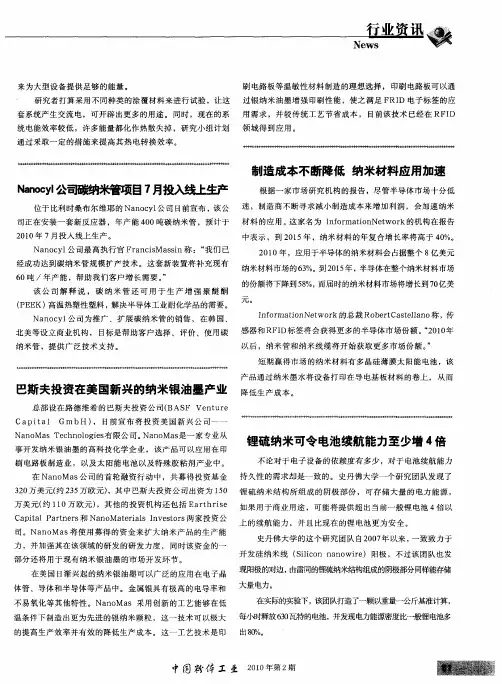
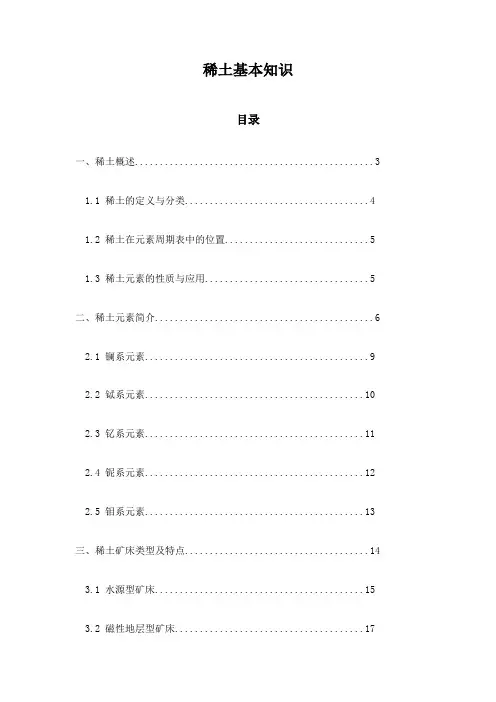
稀土基本知识目录一、稀土概述 (3)1.1 稀土的定义与分类 (4)1.2 稀土在元素周期表中的位置 (5)1.3 稀土元素的性质与应用 (5)二、稀土元素简介 (6)2.1 镧系元素 (9)2.2 铽系元素 (10)2.3 钇系元素 (11)2.4 铌系元素 (12)2.5 钼系元素 (13)三、稀土矿床类型及特点 (14)3.1 水源型矿床 (15)3.2 磁性地层型矿床 (17)3.3 热液型矿床 (18)3.4 混合型矿床 (19)四、稀土提取工艺 (20)4.1 重选法 (21)4.2 浮选法 (22)4.3 磁选法 (23)4.4 电选法 (25)4.5 化学选矿法 (26)五、稀土金属的制备 (27)5.1 熔炼法 (28)5.2 合金化法 (29)5.3 离子交换法 (30)5.4 湿法冶金法 (31)六、稀土材料及其应用 (32)6.1 稀土永磁材料 (33)6.2 稀土发光材料 (34)6.3 稀土催化材料 (36)6.4 稀土储氢材料 (37)七、稀土在高科技领域的应用 (38)7.1 稀土在信息技术中的应用 (39)7.2 稀土在新能源、环保领域的应用 (40)7.3 稀土在生物医学、农业领域的应用 (41)八、稀土资源保护与可持续发展 (42)8.1 稀土资源的现状与面临的问题 (43)8.2 稀土资源的保护和合理利用 (44)8.3 稀土产业的绿色转型与可持续发展 (45)一、稀土概述也称为镧系元素和钇族元素,包括17种化学元素:镧(La)、铈(Ce)、镨(Pr)、钕(Nd)、钐(Sm)、铕(Eu)、钆(Gd)、铽(Tb)、镝(Dy)、钬(Ho)、铒(Er)、铥(Tm)、钇(Y)、镱(Yb)和镥(Lu)。
这些元素在自然界中通常以矿石的形式存在,如独居石、氟碳铈矿等。
稀土元素在地壳中的分布不均,但在某些地区,如中国、美国和印度,它们的储量相对丰富。
稀土元素具有独特的物理和化学性质,如荧光性、磁性、催化活性和电导性等,这使得它们在许多高科技领域具有重要的应用价值。
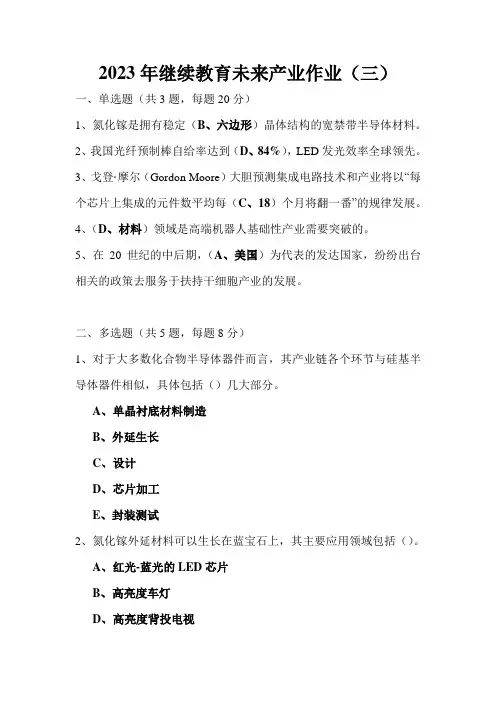
2023年继续教育未来产业作业(三)一、单选题(共3题,每题20分)1、氮化镓是拥有稳定(B、六边形)晶体结构的宽禁带半导体材料。
2、我国光纤预制棒自给率达到(D、84%),LED发光效率全球领先。
3、戈登·摩尔(Gordon Moore)大胆预测集成电路技术和产业将以“每个芯片上集成的元件数平均每(C、18)个月将翻一番”的规律发展。
4、(D、材料)领域是高端机器人基础性产业需要突破的。
5、在20世纪的中后期,(A、美国)为代表的发达国家,纷纷出台相关的政策去服务于扶持干细胞产业的发展。
二、多选题(共5题,每题8分)1、对于大多数化合物半导体器件而言,其产业链各个环节与硅基半导体器件相似,具体包括()几大部分。
A、单晶衬底材料制造B、外延生长C、设计D、芯片加工E、封装测试2、氮化镓外延材料可以生长在蓝宝石上,其主要应用领域包括()。
A、红光-蓝光的LED芯片B、高亮度车灯D、高亮度背投电视E、高亮度影院3、AI Day上“擎天往”演示了浇花、搬运纸箱、金属块等工作,能够很好地完成()等动作,研发团队也在不断更新优化,有望在未来解锁更多应用场景。
B、视觉识别C、抓握D、下蹲E、直立行走4、下列关于各储能技术的说法中,错误的是()。
D、压缩空气储能优点在转换率较高,响应速度较快E、超导储能优点在于容量大、便于长时间储存5、显示领域的发展趋势有()。
C、新兴技术量产进程不断加快D、知识产权成为竞争新高地E、产业链上下游合作进一步加强三、判断题(共5题,每题6分)1、电子信息产业发展要转变观念,推动价值链式招商布局。
错误2、硅光器件虽然产业标准已经统一,但参数优化仍然有大量的工作要做。
错误3、集成电路=半导体=芯片。
错误4、全球二氧化碳排放量与全球温度变化呈现负相关态势,随着工业化、城镇化进程的推进,全球碳排放量正急剧增长。
错误5、电子信息产业指为了实现制作、加工、处理、传播或接收信息等功能或目的,利用电子技术和信息技术所从事的与电子信息产品相关的设备生产、硬件制造、系统集成、软件开发以及应用服务等软硬件的集合。
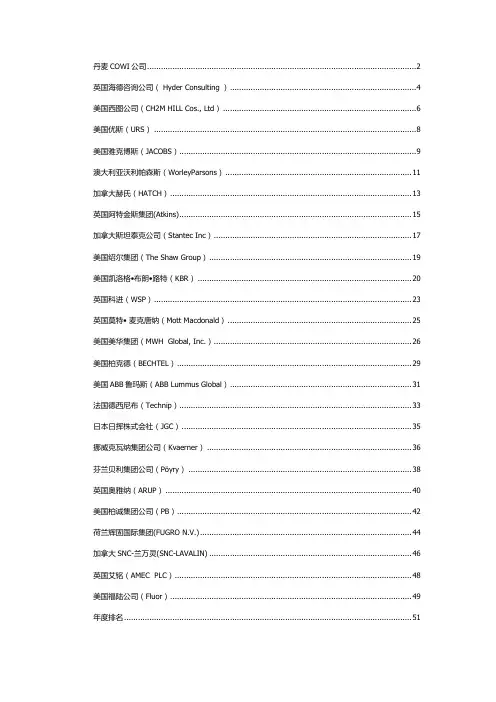
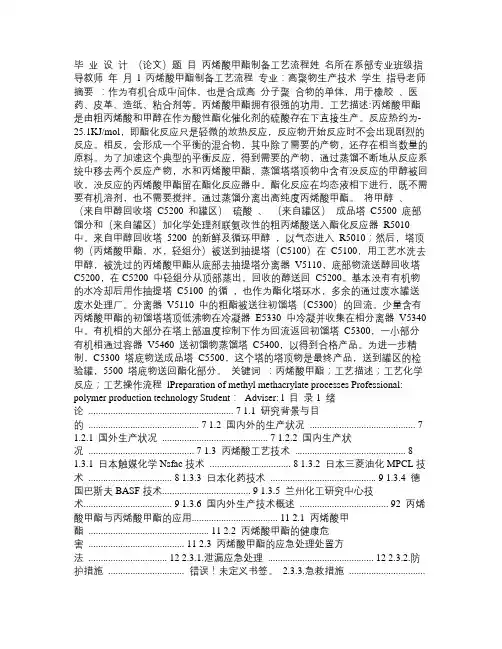
毕业设计(论文)题目丙烯酸甲酯制备工艺流程姓名所在系部专业班级指导教师年月l 丙烯酸甲酯制备工艺流程专业:高聚物生产技术学生指导老师摘要:作为有机合成中间体,也是合成高分子聚合物的单体,用于橡胶、医药、皮革、造纸、粘合剂等。
丙烯酸甲酯拥有很强的功用。
工艺描述:丙烯酸甲酯是由粗丙烯酸和甲醇在作为酸性酯化催化剂的硫酸存在下直接生产。
反应热约为-25.1KJ/mol,即酯化反应只是轻微的放热反应,反应物开始反应时不会出现剧烈的反应。
相反,会形成一个平衡的混合物,其中除了需要的产物,还存在相当数量的原料。
为了加速这个典型的平衡反应,得到需要的产物,通过蒸馏不断地从反应系统中移去两个反应产物,水和丙烯酸甲酯,蒸馏塔塔顶物中含有没反应的甲醇被回收,没反应的丙烯酸甲酯留在酯化反应器中。
酯化反应在均态液相下进行,既不需要有机溶剂,也不需要搅拌。
通过蒸馏分离出高纯度丙烯酸甲酯。
将甲醇、(来自甲醇回收塔C5200 和罐区)硫酸、(来自罐区)成品塔C5500 底部馏分和(来自罐区)加化学处理剂联氨改性的粗丙烯酸送入酯化反应器R5010 中。
来自甲醇回收塔5200 的新鲜及循环甲醇,以气态进入R5010;然后,塔顶物(丙烯酸甲酯,水,轻组分)被送到抽提塔(C5100)在C5100,用工艺水洗去甲醇,被洗过的丙烯酸甲酯从底部去抽提塔分离器V5110,底部物流送醇回收塔C5200,在C5200 中轻组分从顶部蒸出,回收的醇送回C5200。
基本没有有机物的水冷却后用作抽提塔C5100 的循,也作为酯化塔环水,多余的通过废水罐送废水处理厂。
分离器V5110 中的粗酯被送往初馏塔(C5300)的回流。
少量含有丙烯酸甲酯的初馏塔塔顶低沸物在冷凝器E5330 中冷凝并收集在相分离器V5340 中。
有机相的大部分在塔上部温度控制下作为回流返回初馏塔C5300,一小部分有机相通过容器V5460 送初馏物蒸馏塔C5400,以得到合格产品。
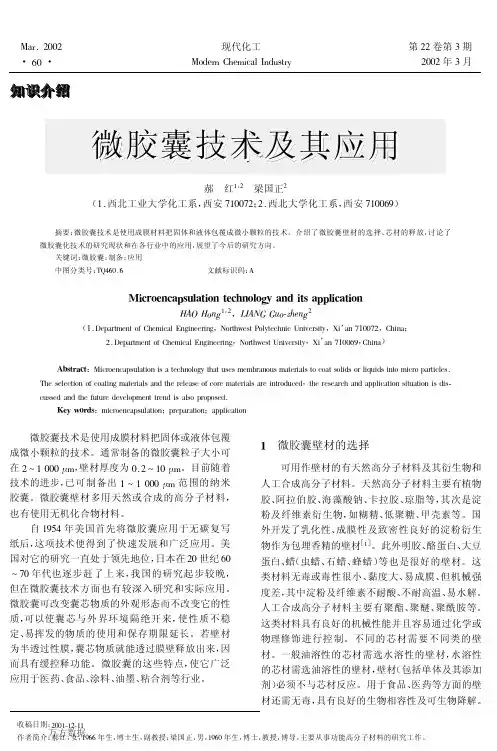
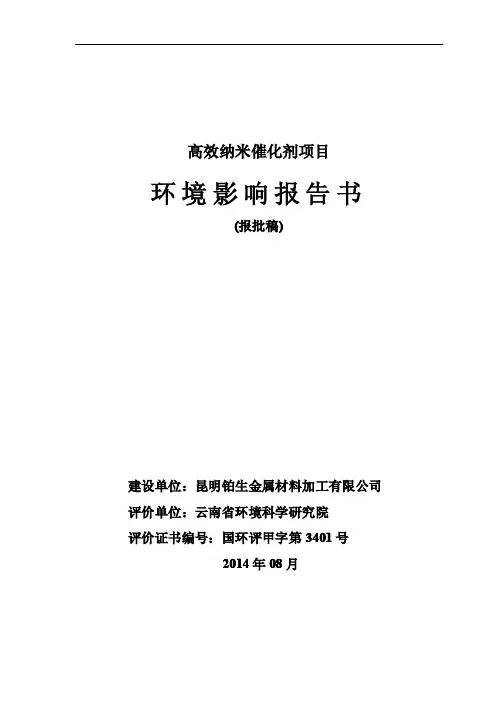
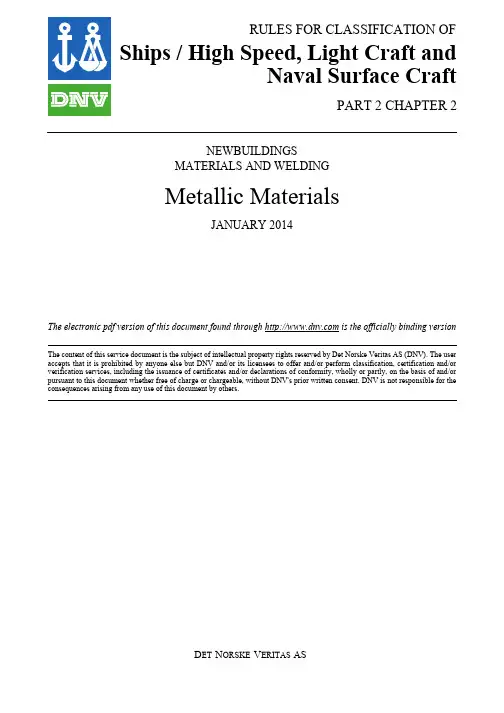
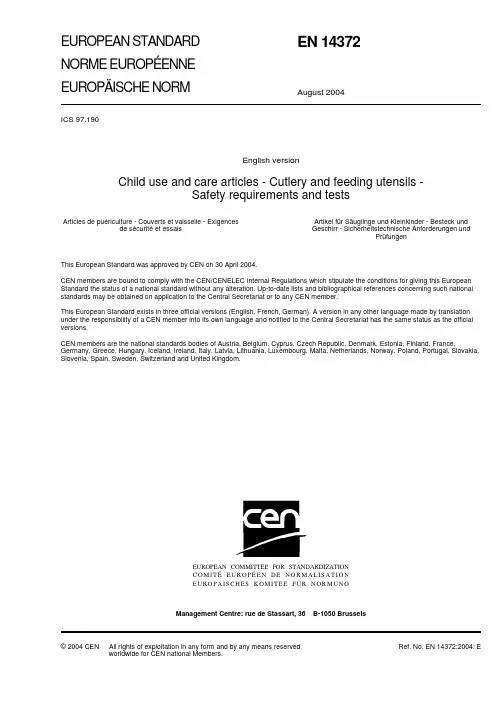
EUROPEAN STANDARD NORME EUROPÉENNE EUROPÄISCHE NORM EN 14372 August 2004ICS 97.190English versionChild use and care articles - Cutlery and feeding utensils -Safety requirements and testsArticles de puériculture - Couverts et vaisselle - Exigencesde sécurité et essaisArtikel für Säuglinge und Kleinkinder - Besteck und Geschirr - Sicherheitstechnische Anforderungen undPrüfungenThis European Standard was approved by CEN on 30 April 2004.CEN members are bound to comply with the CEN/CENELEC Internal Regulations which stipulate the conditions for giving this European Standard the status of a national standard without any alteration. Up-to-date lists and bibliographical references concerning such national standards may be obtained on application to the Central Secretariat or to any CEN member.This European Standard exists in three official versions (English, French, German). A version in any other language made by translation under the responsibility of a CEN member into its own language and notified to the Central Secretariat has the same status as the official versions.CEN members are the national standards bodies of Austria, Belgium, Cyprus, Czech Republic, Denmark, Estonia, Finland, France, Germany, Greece, Hungary, Iceland, Ireland, Italy, Latvia, Lithuania, Luxembourg, Malta, Netherlands, Norway, Poland, Portugal, Slovakia, Slovenia, Spain, Sweden, Switzerland and United Kingdom.EUROPEAN COMMITTEE FOR STANDARDIZATIONC O M I TÉE U R O PÉE NDE N O R M A LI S A T I O NEUR OPÄIS C HES KOM ITEE FÜR NOR M UNGManagement Centre: rue de Stassart, 36 B-1050 Brussels© 2004 CEN All rights of exploitation in any form and by any means reservedworldwide for CEN national Members.Ref. No. EN 14372:2004: EEN 14372:2004 (E)ContentsForeword (3)Introduction (4)1Scope (5)2Normative references (5)3Terms and definitions (5)4Examples of cutlery and feeding utensils (6)5Requirements (8)5.1General (8)5.2General requirements (8)5.2.1Visual and tactile examination (8)5.2.2Sharp points (8)5.2.3Sharp edges (8)5.2.4Small parts (9)5.2.5Holes (Finger traps) (9)5.2.6Printed decorations (9)5.3Mechanical requirements (10)5.3.1Tensile strength (10)5.3.2Torque test (10)5.3.3Tear resistance (10)5.3.4Strength/rigidity (10)5.3.5Drop test (10)5.4Chemical requirements (10)5.4.1General (10)5.4.2Chemical properties (10)6Test methods (12)6.1Preparation of samples and general testing conditions (12)6.2Mechanical tests (12)6.2.1Sharp points test (12)6.2.2Sharp edges test (12)6.2.3Tensile test (12)6.2.4Tear resistance test (13)6.2.5Strength/rigidity (13)6.3Chemical tests (15)6.3.1Determination of the migration of certain elements (15)6.3.2Determination of phthalate content (15)6.3.3Determination of volatile compounds content (17)6.3.4Determination of formaldehyde release (17)6.3.5Determination of nickel release (17)6.3.6Determination of 2,2-bis(4-hydroxyphenyl)propane [Bisphenol A] (BPA) release (17)7Product information (19)7.1General (19)7.2Purchase information (19)7.3Instruction for use (19)7.4Warnings (20)Annex A (informative) Suitable Gas Chromatography–Mass Spectrometry (GC-MS) apparatus, method and precision data for determination of phthalate plasticisers (21)Annex B (informative) Suitable HPLC apparatus and method for the determination of 2,2-bis(4-hydroxyphenyl)propane [Bisphenol A] (BPA) (23)Bibliography (25)2EN 14372:2004 (E)ForewordThis document (EN 14372:2004) has been prepared by Technical Committee CEN/TC 252 “Child use and care articles”, the secretariat of which is held by AFNOR.This European Standard shall be given the status of a national standard, either by publication of an identical text or by endorsement, at the latest by February 2005, and conflicting national standards shall be withdrawn at the latest by February 2005.According to the CEN/CENELEC Internal Regulations, the national standards organizations of the following countries are bound to implement this European Standard: Austria, Belgium, Cyprus, Czech Republic, Denmark, Estonia, Finland, France, Germany, Greece, Hungary, Iceland, Ireland, Italy, Latvia, Lithuania, Luxembourg, Malta, Netherlands, Norway, Poland, Portugal, Slovakia, Slovenia, Spain, Sweden, Switzerland and the United Kingdom.3EN 14372:2004 (E)IntroductionThis document establishes minimum safety requirements and specifies appropriate test methods for children’s cutlery and feeding utensils. Children’s cutlery and feeding utensils are used by either the carer to feed the child or by the child itself, from the average age of weaning (6 months) to 3 years of age. Children over three years of age increasingly use cutlery and utensils designed for adults. Accordingly, this document addresses the potential hazard(s) arising from the use of cutlery and feeding utensils designed for the use of children aged up to 3 years, with or without parental supervision.However, it is stressed that this document cannot eliminate all possible risks to young children up to 3 years of age using such products and that parental or guardian control is of paramount importance.It is essential that the manufacturer gives all warnings and instructions specified in this document clearly, to allow the consumer to ensure the product is used correctly and safely.A significant choking hazard can arise if components of cutlery or feeding utensils become separated during use. This hazard is addressed in this document by the inclusion of security tests.This document also addresses the potential hazard(s) arising from the release of one or more substances, in quantities which could be considered detrimental to health, from the material(s), used in the construction of cutlery and feeding utensils.It is noted that all plastic components of cutlery and feeding utensils are regulated by the Commission Directive 2002/72/EC [1] relating to plastics materials and articles intended to come into contact with foodstuff.It is further noted that Council Directive 89/109/EEC [2] approximates laws of the Member States relating to materials and articles intended to come into contact with foodstuff. Where applicable, Council Directive 82/711/EEC [3] and related amendments (93/8/EEC and 97/48/EC) laying down the basic rules necessary for testing migration of the constituents of plastic materials and articles intended to come into contact with foodstuff has been applied as has Council Directive 85/572/EEC [4] relating to the list of simulants to be used for testing migration of constituents of plastic materials and articles intended to come into contact with foodstuff.It is also noted that the European Parliament and Council Directive 94/27/EC [5] regulates nickel release permitted from jewellery and items in contact with the skin.It is noted that Council Directive 84/500/EEC [6] relates to ceramic articles intended to come into contact with foodstuff.Commission Decision 99/815/EC [7] prohibits the placing on the market of toys and childcare articles made of soft PVC (containing one or more of six specific phthalate plasticisers) and which are intended to be placed in the mouth by children under three years of age.It is recommended that manufacturers and suppliers operate to EN ISO 9001 [8] standard for quality management systems.4EN 14372:2004 (E)1 ScopeThis document specifies safety requirements relating to the materials, construction, performance, packaging and labelling of cutlery and feeding utensils. All products which are intended to be used by a child aged up to 36 months to eat by itself or with the assistance of another person are included in the scope of this document. This includes products which have a different primary function, but have a secondary function intended to allow a child to use the product to eat by itself or with the assistance of another person.It does not apply to pre-prepared food containers, or to cutlery and feeding utensils designed for specialist medical applications or for use under medical supervision.It includes test methods for the mechanical and chemical requirements specified and requirements relating to the instructions of use.There are some products designed as a toy or with features that resemble a toy. These products shall additionally meet the relevant requirements of EN 71.This document is not applicable for drinking equipment (feeding bottles, teats, spouts, and cups) which is covered by EN 14350-1 and EN 14350-2.2 Normative referencesThe following referenced documents are indispensable for the application of this document. For dated references, only the edition cited applies. For undated references, the latest edition of the referenced document (including any amendments) applies.EN 71-1, Safety of toys - Part 1: Mechanical and physical properties.EN 71-3, Safety of toys - Part 3: Migration of certain elements.EN 1811, Reference test method for release of nickel from products intended to come into direct and prolonged contact with the skin.EN ISO 2409, Paints and varnishes - Cross-cut test (ISO 2409:1992)EN ISO 4614, Plastics - Melamine-formaldehyde mouldings - Determination of extractable formaldehyde(ISO 4614:1977).3 Terms and definitionsFor the purposes of this document, the following terms and definitions apply.3.1cutleryimplements used for eating such as knives, forks, spoons and food pushers3.2feeding utensilsimplements or containers used for feeding children such as plates and bowls3.3suction padcomponent of a feeding utensil intended to adhere or secure the utensil to a surface5EN 14372:2004 (E)64 Examples of cutlery and feeding utensilsExamples of cutlery and feeding utensils are shown in Figures 1, 2 and 3.KeyA SpoonB ForkC KnifeD1 Food pusher – top view D2 Food pusher – front view D3 Food pusher – side viewFigure 1 — Examples of cutleryEN 14372:2004 (E)7KeyA 1 Bowl – side view A 2 Bowl – top viewB 1 Plate – side view B 2 Plate – top viewC 1 Keep-warm plate – side view C 2 Keep-warm plate – top view C 3 Removable plug on keep-warm plateD 1 Weaning bowl – side view D 2 Weaning bowl – top viewFigure 2 — Examples of feeding utensilsEN 14372:2004 (E)8KeyA 1 Feeding utensil with suction pad – side view A 2 Feeding utensil – top viewB 1 Suction pad – side view B 2 Suction pad – top view B 3 Suction pad release tabFigure 3 — Example of a feeding utensil with separate suction pad5 Requirements5.1 GeneralAll materials of construction shall comply with the requirements in this document.5.2 General requirements5.2.1 Visual and tactile examinationAll components of cutlery and feeding utensils when assembled for use, shall be free from points and edges which are likely to cause injury. The article shall be free from splinters, burrs and flash. 5.2.2 Sharp pointsAccessible points shall not be sharp points as determined in accordance with 6.2.1. 5.2.3 Sharp edgesAccessible edges shall not be sharp edges as determined in accordance with 6.2.2.EN 14372:2004 (E)95.2.4 Small partsWhen inserted into a small parts cylinder (see Figure 4), no component part of tested sample shall fit entirely within the cylinder in any orientation and without compression.Dimensions in millimetresFigure 4 — Small parts cylinder5.2.5 Holes (Finger traps)To avoid entrapment of fingers there shall be no accessible hole which allows the insertion of a 5,5 mm diameter rod, unless the accessible hole also allows the insertion of a 12 mm diameter rod or has a penetration of less than 10 mm.This requirement applies only to components made of materials with a Shore A hardness of more than 60 IRHDs.NOTE Circular holes not meeting this requirement present a risk of restricting blood circulation. Also, non-circular holes with acute V-shaped angles or inward facing angles that are not well rounded should be avoided.5.2.6 Printed decorationsWhen tested in accordance with EN ISO 2409, no print from decoration shall be removed from any product. Adhesive labels shall not be used.EN 14372:2004 (E)5.3 Mechanical requirements5.3.1 Tensile strengthAll products with more than one component and which are intended to be held by a child shall be tested as described in 6.2.3. No component shall break, tear or separate during this test.5.3.2 Torque testIf a component can be gripped between thumb and forefinger, it shall be torque tested according to EN 71-1. No component shall break, tear or separate during this test.5.3.3 Tear resistanceComponents produced out of materials with a Shore A hardness of less than 60 IRHDs but excluding suction pads shall be tested as described in 6.2.4. The tested component shall not break, tear or separate during the subsequent tensile test.5.3.4 Strength/rigidityWhen tested in accordance with 6.2.5, no component of cutlery shall break, tear or separate.5.3.5 Drop testAll products shall be tested in accordance with EN 71-1. If the product breaks, a warning shall be provided as given in 7.4.5.4 Chemical requirements5.4.1 GeneralMaterials used for the manufacture of cutlery and feeding utensils shall be subjected to the tests listed in Table 1 and shall conform to 5.4.2.5.4.2 Chemical properties5.4.2.1 Requirements by materialMaterials used in the manufacture of components of cutlery and feeding utensils shall be subjected to the tests marked with an x in Table 1.10Table 1 — Tests to be carried out on materialsTestsMigration of certain elements PhthalatecontentVolatilecompoundscontentFormaldehydereleaseNickelreleaseBisphenol AreleaseMaterial(see 6.3.1) (see 6.3.2) (see 6.3.3) (see 6.3.4) (see 6.3.5) (see 6.3.6) Silicone rubber x xThermoplastic elastomers (TPEs) xGlass, ceramics, glass-ceramics,vitreous enamels and other enamelsxThermoplastics x x x a Thermosetting plastics x xMetals / Alloys x xWood x xa Only thermoplastics containing polycarbonate or polysulfone shall be tested for Bisphenol A release5.4.2.2 Migration of certain elementsWhen tested in accordance with 6.3.1, the migration of all elements from all material(s) used in the manufacture of cutlery and feeding utensils shall not exceed the limits given in Table 2.When components of cutlery and feeding utensils are manufactured of different material(s), or in different colours, all components shall be tested individually. Decorations shall be considered to be part(s) of the material(s) on which they are printed.Table 2 — Limits of element migrationElement Limitmg/kgAntimony, Sb Arsenic, As Barium, Ba Cadmium, Cd Lead, Pb Chromium, Cr Mercury, Hg Selenium, Se15 10 100 20 25 10 10 100NOTE The analytical method specified in EN 71-3 has been appliedin this document to cutlery and feeding utensils. The limits have been setbased on the limit of detection for each element using commonly availableanalytical techniques.5.4.2.3 PhthalatecontentWhen thermoplastic components of cutlery and feeding utensils are tested according to 6.3.2, the total content of specified phthalates shall not exceed 0,1 % (m/m).5.4.2.4 Volatile compounds contentWhen silicone rubber components of cutlery and feeding utensils are tested according to 6.3.3, the volatile compounds content shall not exceed 0,5 % (m/m).release5.4.2.5 FormaldehydeWhen thermosetting plastic or wood components of cutlery and feeding utensils are tested according to 6.3.4, the release of formaldehyde shall not exceed 15 mg formaldehyde/kg migration liquid.release5.4.2.6 NickelWhen metal or alloys are tested according to 6.3.5, the release of nickel shall not exceed 0,5 µg/cm2/week.5.4.2.7 2,2-bis(4-hydroxyphenyl)propane [Bisphenol A] (BPA) releaseWhen polycarbonate and polysulfone containing thermoplastic components of cutlery and feeding utensils are tested according to 6.3.6, the migration of the following chemical shall not exceed 0,03 µg/ml into aqueous food simulant:2,2-bis(4-hydroxyphenyl)propane [Bisphenol A] (BPA)CAS No. 80-05-7IUPAC 4,4’-(methylethylidene)-bisphenol or 4,4’-isopropylidenediphenol6 Test methods6.1 Preparation of samples and general testing conditionsAll samples shall be submerged in water at (60 ± 2) °C for (10 ± 0,5) min. Drain excess water before allowing the samples to cool to room temperature in a desiccator for (24 ± 1) h prior to testing. Use new samples, preferably from the same batch, for each test unless otherwise stated (i.e. samples used in one test shall not be used in another test).6.2 Mechanical tests6.2.1 Sharp points testTest in accordance with EN 71-1.6.2.2 Sharp edges testTest in accordance with EN 71-1.6.2.3 Tensile testThe tensile force shall be applied to one component of the sample whilst another component is firmly held. A pre-load of (5 ± 2) N shall be applied to align the specimen and then the force shall be increased to (90 ± 5) N at a cross head speed of (10 ± 5) mm/min and maintained at that level for (10 ± 1) s.Clamps or other devices shall hold the components securely during the test without giving rise to damage which might affect the test result. Any results where such damage occurs shall be disregarded.Tests shall be carried out along the major axis and at the right angles to the major axis. Every possible combination of pairs of components shall be tested.6.2.4 Tear resistance testThe components to be tested shall be separated or if necessary, cut from any other components.Place the component to be tested on a cutting board of at least 10 mm thickness and (70 ± 5) Shore D hardness. Place the tip of the indentor, the shape and dimensions of which are given in Figure 5, in the approximate centre of the largest surface of the component to be tested.At a crosshead speed of (10 ± 5) mm/min apply a force of (200 ± 10) N for (1 ± 0,5) s.If the indentor punctures the component carry out a tensile test in accordance with 6.2.3. For the component suitable fixing devices shall be used to hold opposite ends of the component securely, so that the puncture produced by the indentor is at 90 ° to the axis of tensile force.Dimensions in millimetresNOTE 1 All dimensions with a tolerance are machined as EN ISO 1302 [9] toNOTE 2 Material: H13 high chrome tool steel or equivalent. Harden to 45-50 Rockwell CFigure 5 — Indentor for tear resistance test6.2.5 Strength/rigidityThe test shall be applied to all cutlery.A tensile testing machine with an attachment to facilitate three-point bend loading onto handles of articles shall be used to apply a compression load to (100 ± 5) N at a crosshead speed of (10 ± 5) mm/min and maintain for (10 ± 1) s as shown in Figure 6.The load shall be applied at the mid point of item’s length. The test shall be repeated with load applied at (30 ± 1) mm either end of the product. In each test the restraining points shall be positioned (25 ± 1) mm from the load point.Note It may be necessary to prevent the cutlery from slipping during the test.Dimensions in millimetresNOTE 1 Material: H13 high chrome tool steel or equivalent. Harden to 45-50 Rockwell C.NOTE 2 Dimensions marked as “A” made to fit the individual test machine load cell.NOTE 3 Dimensions marked as “B” made to fit the individual test machine table.Figure 6 — Apparatus for strength/rigidity test6.3 Chemical tests6.3.1 Determination of the migration of certain elements6.3.1.1 PrincipleSoluble elements (antimony, arsenic, barium, cadmium, chromium, lead, mercury and selenium) are extracted from the individual components of the cutlery and feeding utensils which are accessible to the child. Conditions which simulate contact with stomach acid shall be used. The concentrations of the soluble elements are described quantitatively.6.3.1.2 Apparatus, reagents, procedure and determinationTests shall be carried out according to EN 71-3.6.3.2 Determination of phthalate content6.3.2.1 PrincipleThe aim of the method is primarily to extract, identify and quantify monomeric phthalates (with wider application to other types of plasticisers) contained in PVC samples. The extraction method uses Soxhlet extraction apparatus with diethyl ether. The total diethyl ether extractable plasticiser content is calculated by weight with Gas Chromatography-Mass Spectroscopy (GC-MS) detection to identify and quantify individual phthalates.NOTE It is recommended that suitable qualitative methods be used to identify chlorine containing materials [10].6.3.2.2 Apparatus6.3.2.2.1Balance (accurate to 4 decimal points).6.3.2.2.2150 ml stoppered flat-bottomed flask.6.3.2.2.3Soxhlet extractor with siphon cup.6.3.2.2.4Soxhlet cellulose thimble.6.3.2.2.5Water cooled condenser.6.3.2.2.6Spark proof heating mantle/water bath.6.3.2.2.7 Steambath.6.3.2.2.8Oven (105 ± 5) °C.chamber.6.3.2.2.9 Desiccator6.3.2.2.10(200 ± 0,15) ml volumetric flask.6.3.2.3 Reagents (analytical grade)ether.6.3.2.3.1 Diethyl6.3.2.3.2 n-Hexane.6.3.2.3.3Di-isononyl phthalate (DINP), CAS No. 28553-12-0.6.3.2.3.4Di-(2-ethylhexyl) phthalate (DEHP), CAS No. 117-81-7.6.3.2.3.5Di-n-octyl phthalate (DNOP), CAS No. 117-84-0.6.3.2.3.6Di-iso-decyl phthalate (DIDP), CAS No. 26761-40-0.6.3.2.3.7Butyl benzyl phthalate (BBP), CAS No. 85-68-7.6.3.2.3.8Di-butyl phthalate (DBP), CAS No. 84-74-2.6.3.2.4 Reagents (standard solutions)Prepare a series of individual stock standard solutions of the individual phthalate esters in n-Hexane as shown in Table 3.Table 3 — Stock solutionsPhthalate ester DIDP DINP DBP BBP DNOP DEHPConcentrationµg/ml 5 000 5 000 200 200 200 200Where appropriate from the stock standard solutions prepare two sets of five phthalate esters GC-MS calibration solutions in n-Hexane to the maximum linear concentration shown in Table 4 (Calibration Set 1), and Table 5 (Calibration Set 2).Table 4 — Calibration Set 1Phthalate ester DINP DBP BBP DEHPConcentrationµg/ml 5 000 20 20 20Table 5 — Calibration Set 2Phthalate ester DIDP DNOPConcentration µg/ml 5 000 206.3.2.5 Sampling, extraction and gravimetric analysis for phthalate plasticisersPlace the sample in a pre-weighed 150 ml flat bottomed flask and heat in an oven at (105 ± 5) °C for (30 ± 5) min. Allow to cool in a desiccator. Weigh the flask and sample. Use a scalpel or other appropriate cutting utensils to cut a representative portion from the sample into small pieces (< 5 mm ∅). Weigh accurately (2 ± 0,2) g of the pieces into a Soxhlet thimble and add cotton wool to the top of the thimble.Add approximately (50 ± 10) ml of diethyl ether into the flask. Reflux gently for 6 h ± 30 min. Allow sufficient time for the diethyl ether to cool. Completely evaporate the diethyl ether by means of a steam bath. Place the flask in an oven at (105 ± 5) °C for (30 ± 5) min. Allow to cool in a desiccator and weigh. Repeat the drying and cooling cycles until the difference between two consecutive weighings are not more than 0,0005 g. A blank solution shall be run consecutively.6.3.2.6 Preparation of sample extract solution for Gas Chromatography-Mass Spectroscopy (GC-MS)To the weighed extract (6.3.2.5) add (50 ± 2) ml of n-Hexane. Stopper the flask and swirl to completely dissolve the extract. Decant the solution into a 200 ml volumetric flask, repeatedly rinsing the flask with n-hexane. Make up to the mark. Prepare (if necessary) further diluted solutions using n-hexane such that the final concentration in solution is within the linear calibration concentration for phthalate present. Transfer a portion of the n-hexane solution into a capped vial for GC-MS analysis.Suitable GC-MS column and method and data on the repeatability of the method are described in Annex A.results6.3.2.7 CalculationofCompare the obtained GC-MS spectra to known spectra or phthalate ester standards to allow qualitative identification of phthalate ester plasticisers or any other compounds. Plot a calibration graph of the response against the known standard concentrations.From the calibration graph determine the response of phthalate ester found in the blank/sample and interpolate the concentration of phthalate ester in µg/ml correcting for any dilutions. Gravimetric analysis100(g)sample of Weight (g)extract of Weight (m/m)Extract %×=GC-MS analysisfactor dilution 00010(g)sample of Weight (ml)200µg/ml)(solution Extract (m/m)r Plasticise %×××=6.3.3 Determination of volatile compounds content 6.3.3.1 ProcedureAll weighings shall be with an accuracy of at least ± 0,1 mg. Drain excess water from the sample preparation stage (see 6.1).Pre-heat an open, shallow container for 1 h at (100 ± 5) oC. Cool the container in a desiccator for 1 h and weigh (weight a).Place approximately 10 g of the whole sample into the container and place in a drying oven at (100 ± 5) °C with fresh air inlet. After 1 h, cool the container and sample in a desiccator for at least 2 h and weigh (weight b). Replace the container with the sample in a drying oven at (200 ± 5) °C with fresh air inlet. After 4 h, cool the container and sample in a desiccator for at least 2 h and re-weigh (weight c.)The volatile compounds content is calculated from the percentage weight difference between weight b and weight c, after deducting the weight of the container (weight a). 6.3.4 Determination of formaldehyde releaseThe levels of formaldehyde release from cutlery and feeding utensils shall be determined using the method outlined in EN ISO 4614.6.3.5 Determination of nickel releaseAll metal and alloy components shall be tested according to EN 1811.6.3.6 Determination of 2,2-bis(4-hydroxyphenyl)propane [Bisphenol A] (BPA) release 6.3.6.1 PrincipleBPA is extracted from the test articles into aqueous food simulant, identified and its level determined by high performance liquid chromatography (HPLC) with ultra violet diode array detection (UV-DAD) and fluorescence detection (FLD). 1)NOTE 1UV-DAD without FLD is only applicable for concentrations of BPA in excess of 0,1 µg/ml.1) This method is partially based on prEN 13130-13 [11]NOTE 2 Alternative methodology, such as gas chromatography (GC), has been documented and may be used. However, in comparison with the gas chromatographic method, the HPLC method has the advantage that Bisphenol A can be determined directly in the migrate without pre-concentration and derivatisation.6.3.6.2 Apparatus6.3.6.2.1 HPLC preferably equipped with an automatic 50 µl loop injector and a variable wavelength UV-DAD, fluorescence detector and data station. 6.3.6.2.2 HPLC column capable of separating BPA fully from peaks originating from simulants and/or solvents used. 6.3.6.2.3 Membrane filter with a pore size of 0,45 µm. 6.3.6.2.4 Analytical balance with sensitivity of 0,0001 g. 6.3.6.2.5 Micro syringes: 10 µl, 20 µl and 50 µl.6.3.6.3 Reagents: chemicals (analytical reagent grade unless otherwise specified)6.3.6.3.1Water (HPLC grade).6.3.6.3.2 Methanol (HPLC grade). 6.3.6.3.3 Distilled water.6.3.6.4 Reagents: authentic samples (purity greater than 98 %)6.3.6.4.12,2-bis(4-hydroxyphenyl)propane [Bisphenol A] (BPA).6.3.6.5 Reagents: standard solutions 6.3.6.5.1Stock standard solution of BPA in methanol at defined concentration of approx. 1,0 mg/ml.Weigh to the nearest 0,1 mg approx. 100 mg BPA (6.3.6.4.1) into a 100 ml volumetric flask. Dissolve the BPA in methanol (6.3.6.3.2) and make up to the mark with methanol. Calculate the concentration in µg BPA/ml solution. Repeat the procedure to obtain a second stock solution.NOTE The solution may be stored refrigerated at +4 °C in a closed container, free from light for a period of at least 3weeks.6.3.6.5.2 Calibration solutionsTransfer by micro syringe 0 µl, 10,0 µl, 20,0 µl, 30,0 µl, 40,0 µl, 50,0 µl of the stock standard solution (6.3.6.5.1) into a series of six 1 000 ml volumetric flasks and make up to the mark with analyte-free aqueous food simulant (6.3.6.3.3 ) and mix thoroughly.Calculate the exact concentrations of BPA in the calibration samples in µg/ml. Repeat the procedure using the second stock solution (6.3.6.5.1). 6.3.6.6 ProcedureFor feeding utensils, transfer 100 ml of the aqueous food simulant (6.3.6.3.3) into the test article. If this volume is too large, then use a known volume equivalent to 50 % of the capacity of the utensils. For cutlery, place the test article in a 200 ml measuring cylinder (or equivalent) and add a known volume of aqueous food simulant (6.3.6.3.3)。
摘要乳酸杆菌是一种无芽孢的革兰氏阳性菌,是人与动物肠道内重要的生理菌群之一,乳酸杆菌具有抵抗病原菌定植、维持肠道菌群平衡、控制炎症反应、增强先天免疫、降低血清胆固醇等生理功能。
乳酸杆菌作为饲料添加剂,能提高动物的生产性能,免疫功能与肠道黏膜形态。
本试验旨在研究鼠李糖乳酸杆菌(Lactobacillus rhamnosus GG,LGG)微胶囊化包被技术提其耐高温特性。
选择海藻酸钠和壳聚糖,通过双层包埋并经挤压法制作LGG 微胶囊,研究海藻酸钠浓度(0.5%、1%、2%)、LGG 菌液与海藻酸钠比例(1:0.5、1:1、1:2、1:4)、壳聚糖溶液pH 值(pH4.0、pH 5.0、pH 6.0)、壳聚糖浓度(0.5%、1%、2%)和CaCl2 浓度(0.5%、1%、2%)等五个包被条件因素对LGG 微胶囊的耐热性能影响。
具体步骤:以生理盐水悬浮菌液作为包埋菌液,菌液与海藻酸钠溶液按比例混合均匀,将混合溶液加入CaCl2 溶液中固化,搅拌、充分凝固,加入壳聚糖溶液并搅拌,制成双层LGG 微胶囊。
以柠檬酸钠和碳酸氢钠混合溶液作为微胶囊释放剂。
以游离LGG 照组,在80℃高温下加热15min,检测微胶囊化LGG 的存活率。
结果显示:1)壳聚糖的pH 值为pH4.0 与pH6.0 制备的微胶囊耐热性显著高于pH5.0 组(P<0.05)。
2)LGG 菌液与海藻酸钠溶液体积比为1:0.5 制得的微胶囊耐热性最佳,显著高于其它比例(P <0.05)。
3)海藻酸钠浓度为2%的条件下,制得的微胶囊耐热性显著高于其它组(P<0.05)。
4)不同的壳聚糖浓度(0.5%、1%、2%)的条件下,0.5%浓度的壳聚糖制得的微胶囊的耐热性最差(P<0.05),2%的壳聚糖浓度较1%耐热性能较好(P>0.05)。
5)CaCl2 浓度为1%或2%时,制得的微胶囊耐热性显著高于浓度为0.5%组(P<0.05)。
基于单因素试验结合包被材料的使用效率综合分析,LGG/海藻酸钠/壳聚糖微胶囊的最优微囊化条件为:海藻酸钠浓度2%、LGG 菌液与海藻酸钠溶液比例1:0.5、壳聚糖浓度2%、壳聚糖pH 4.0、CaCl2 浓度1%,通过微胶囊显著提高了LGG 的耐热性。